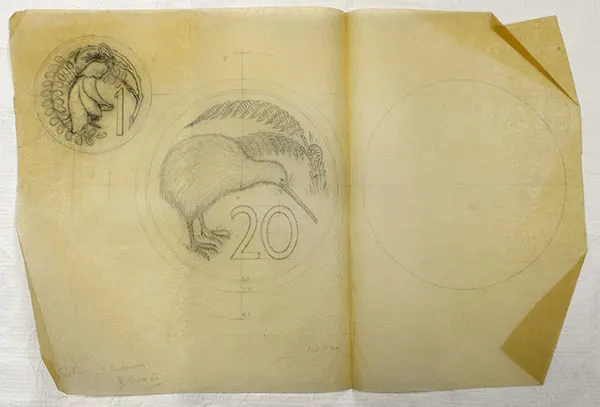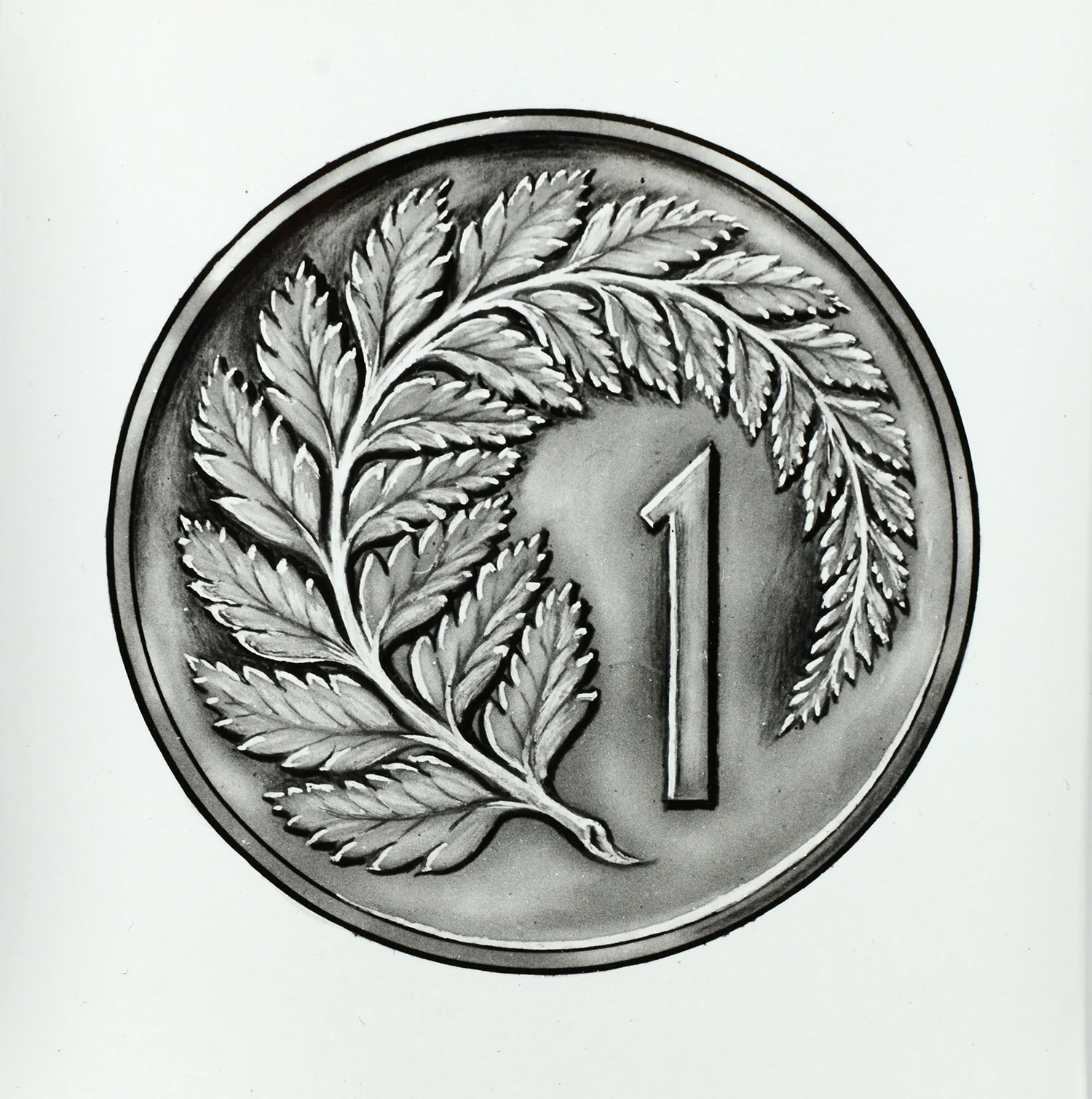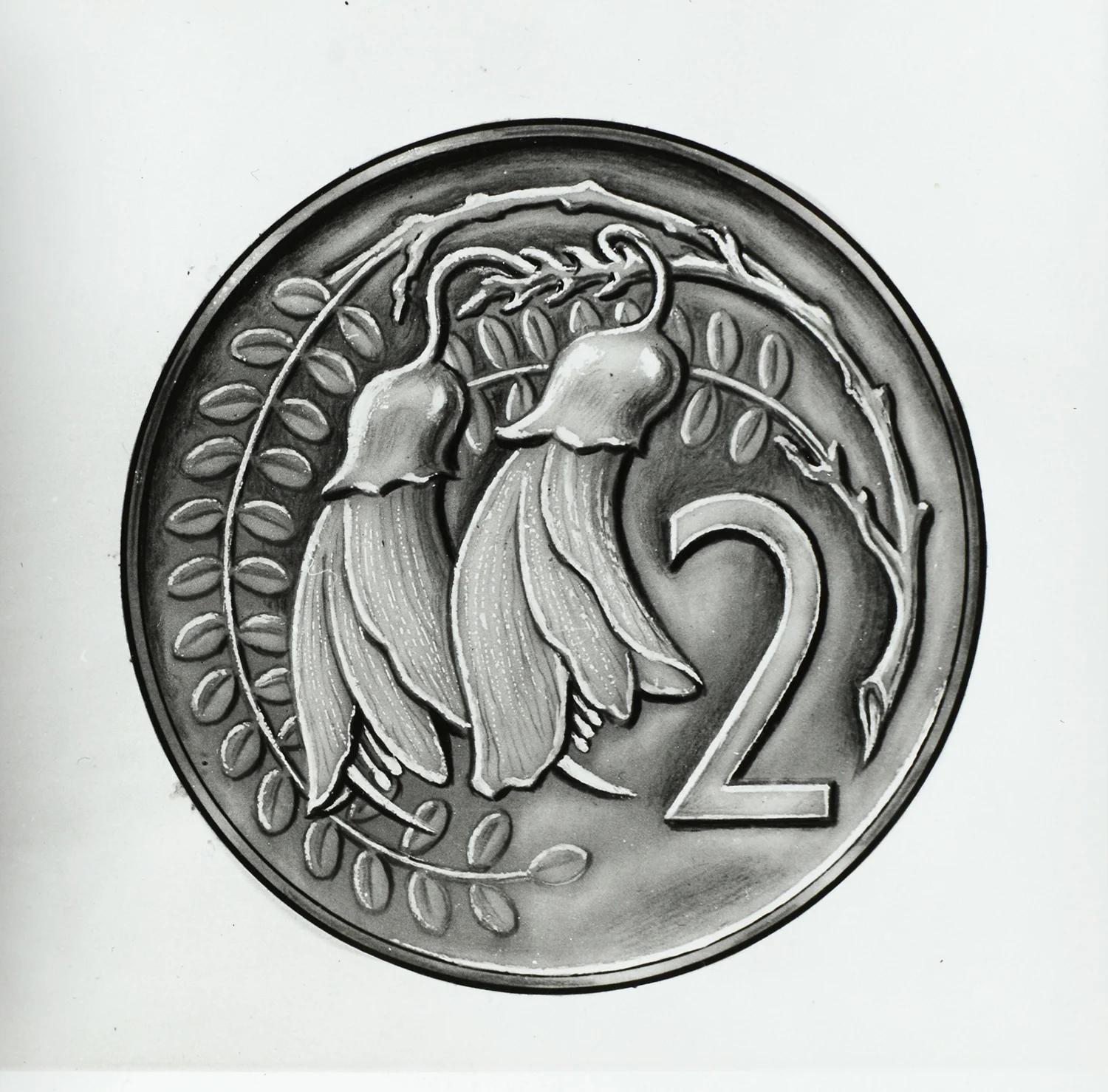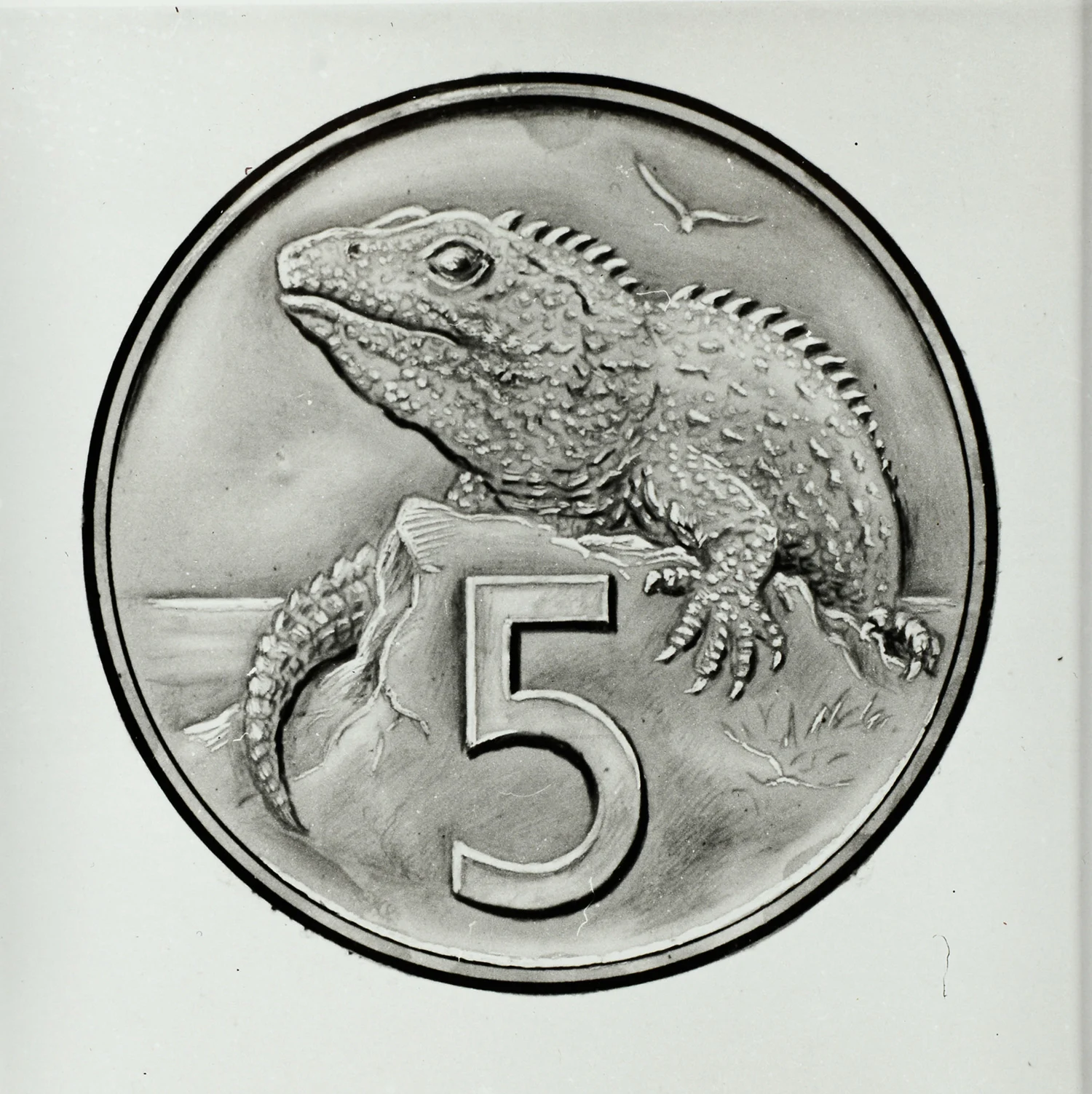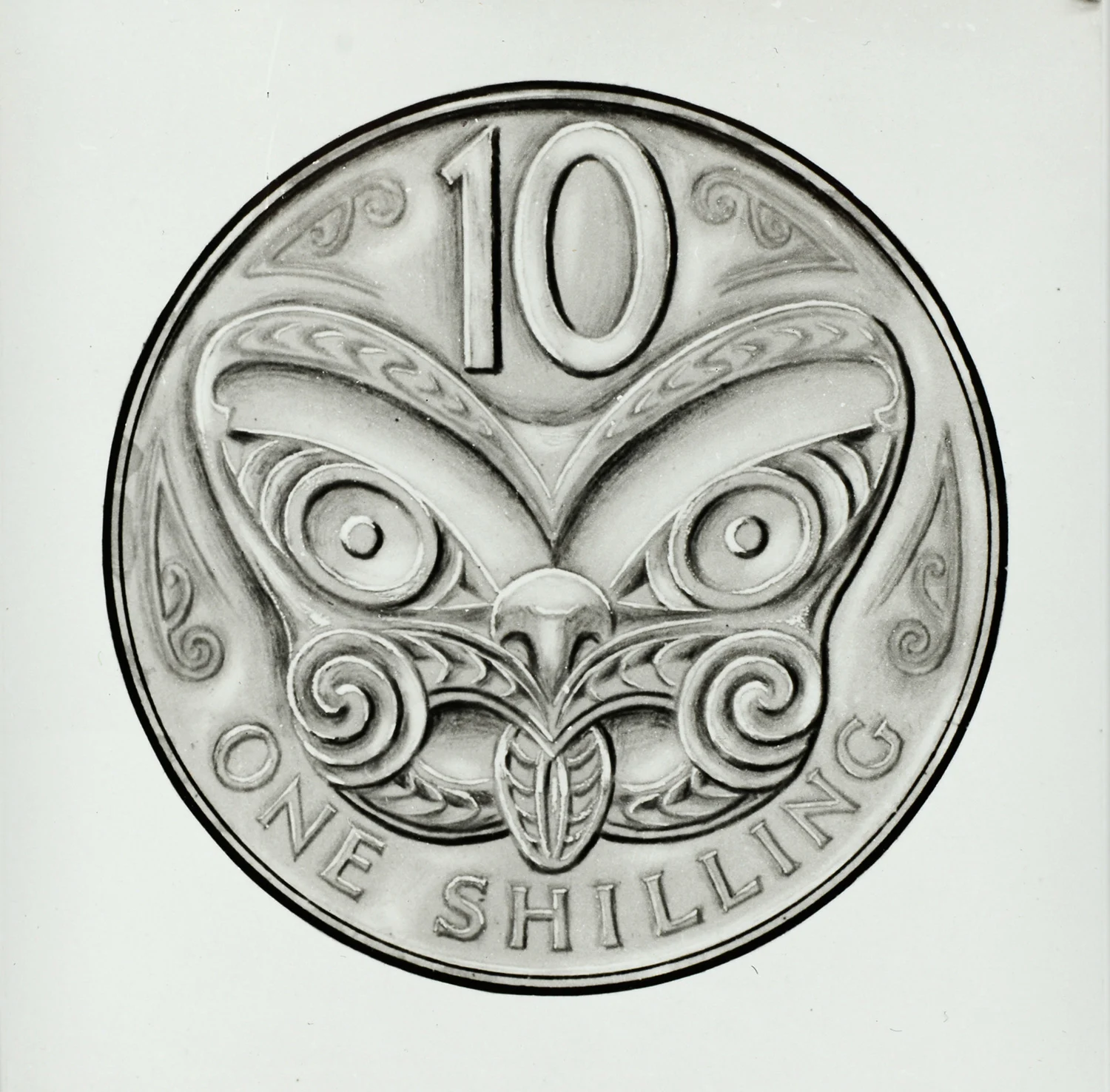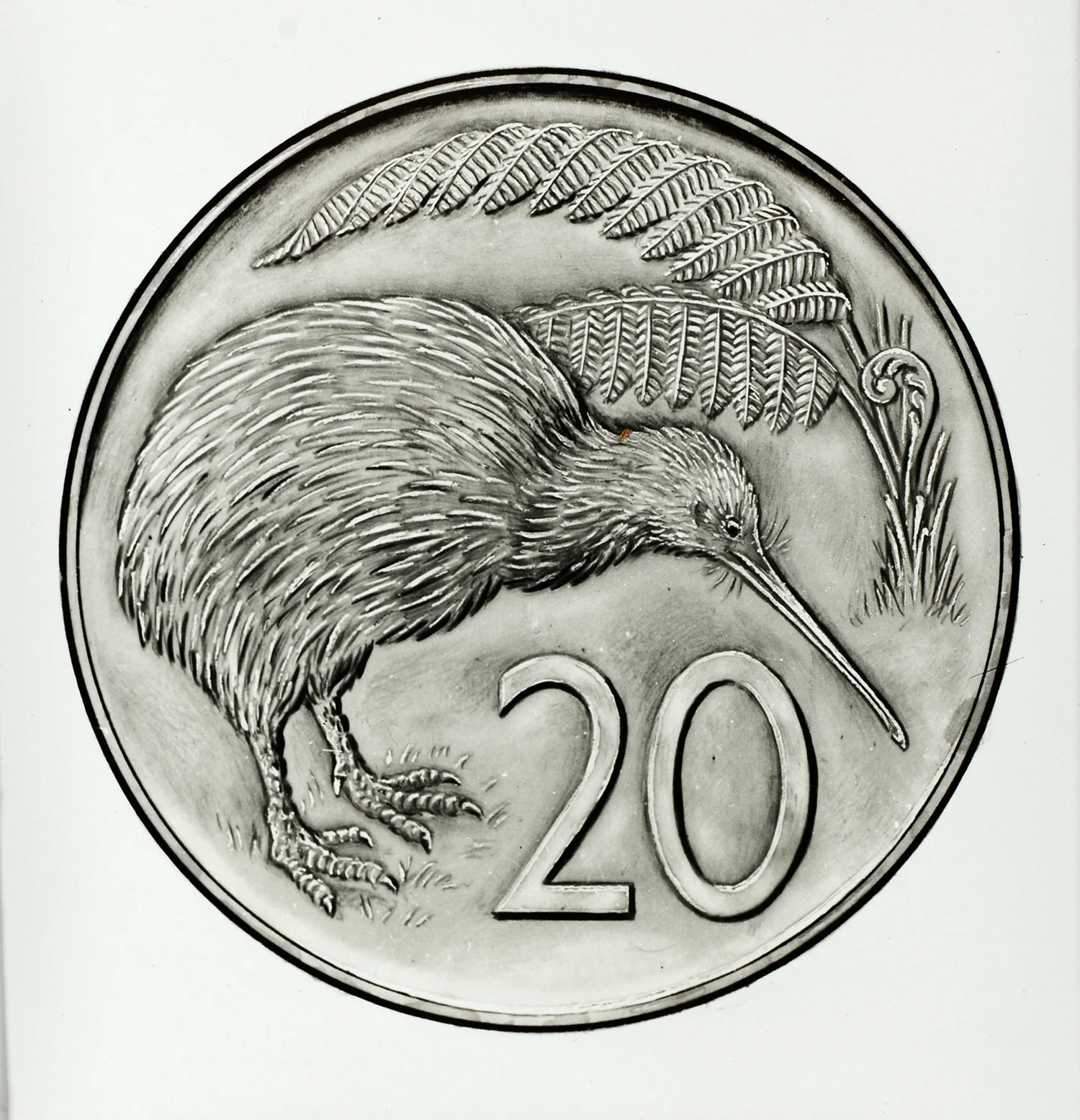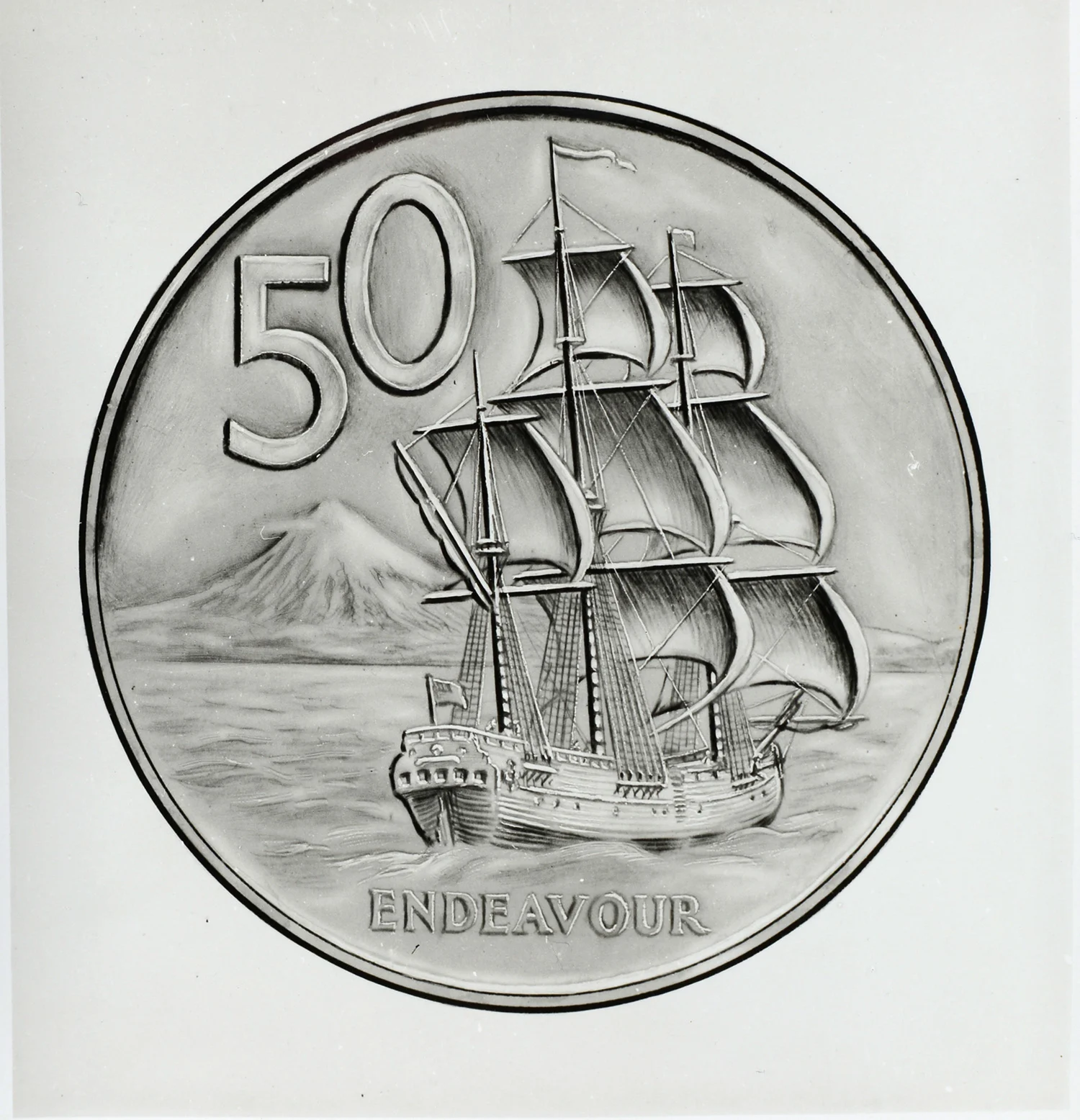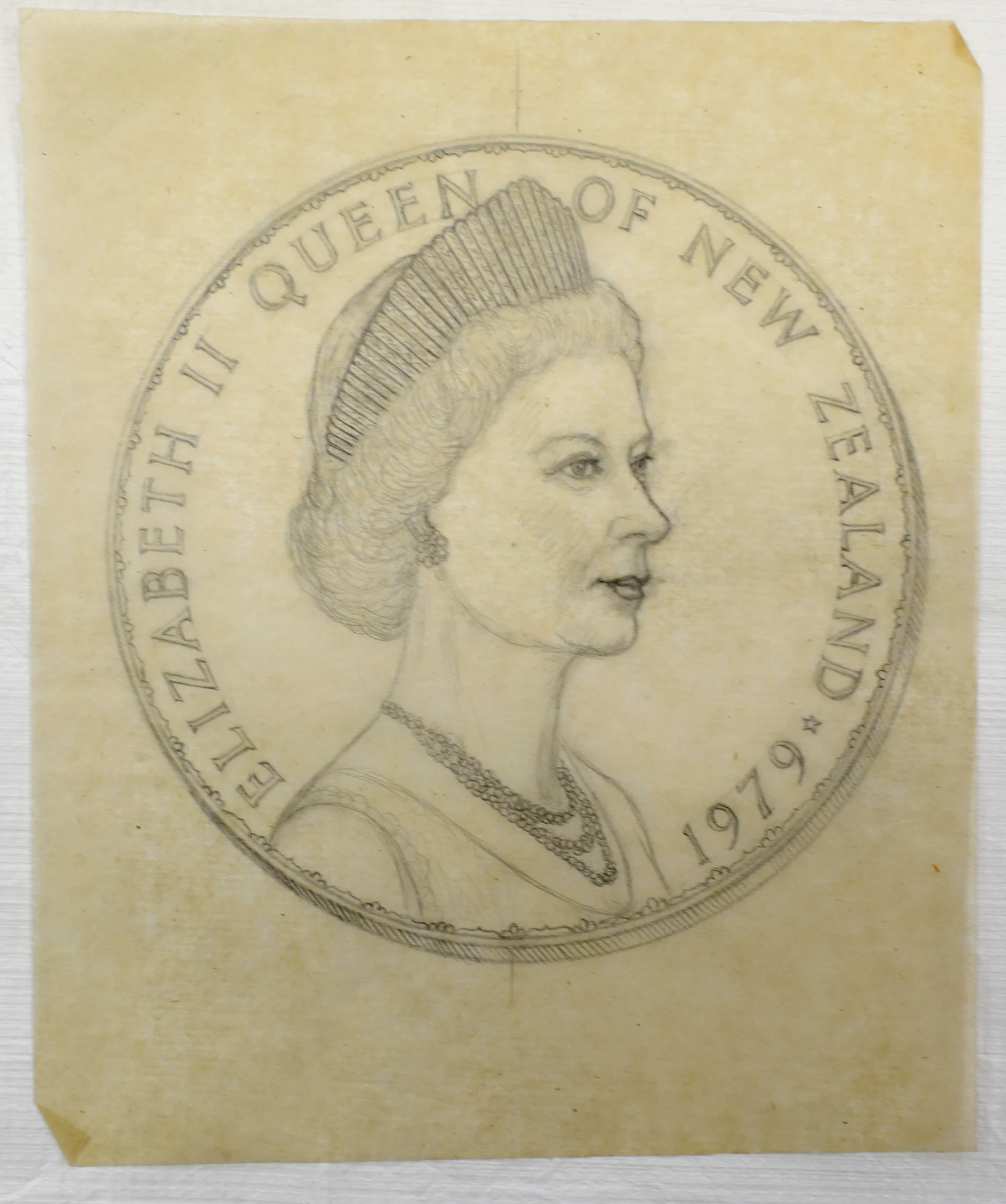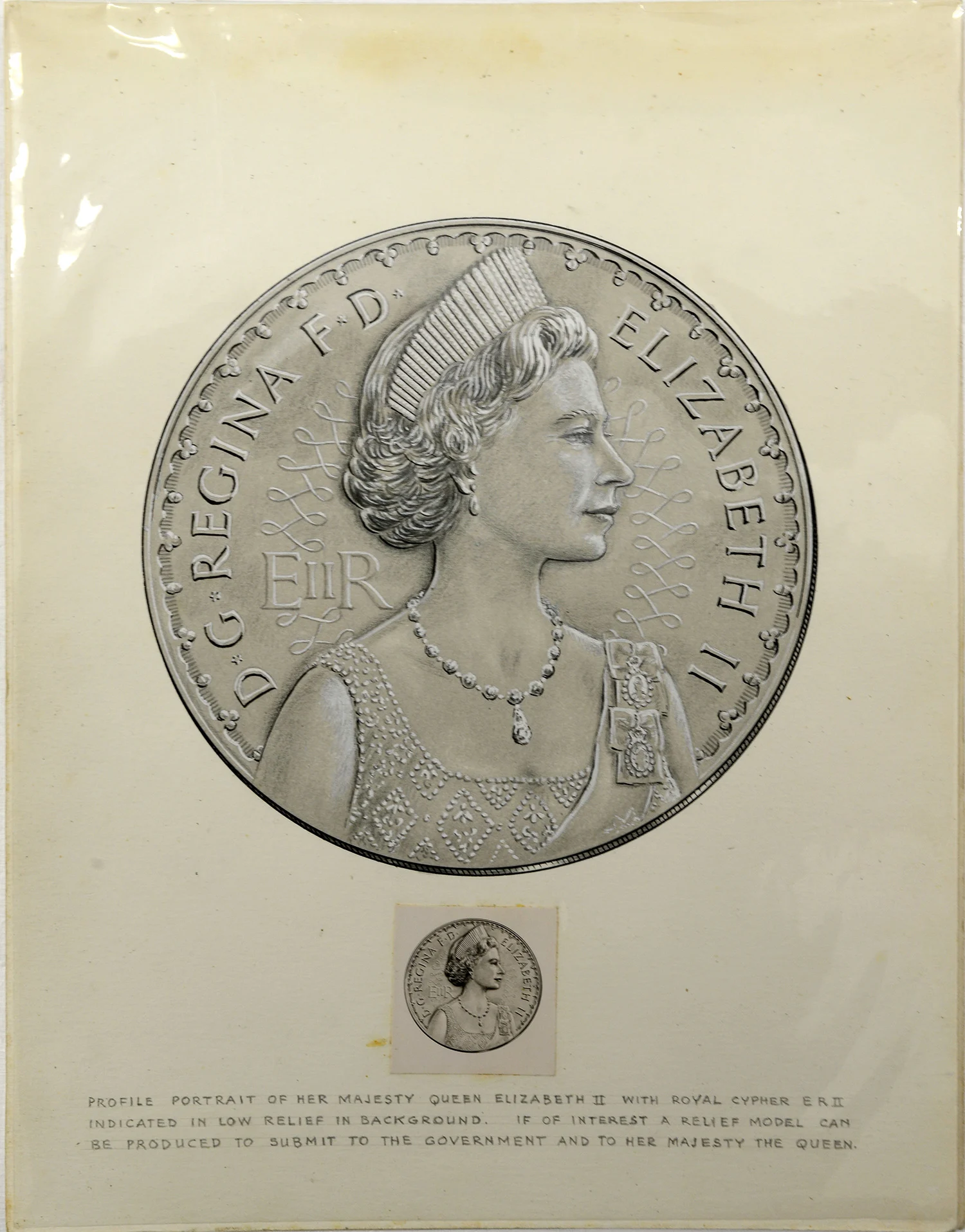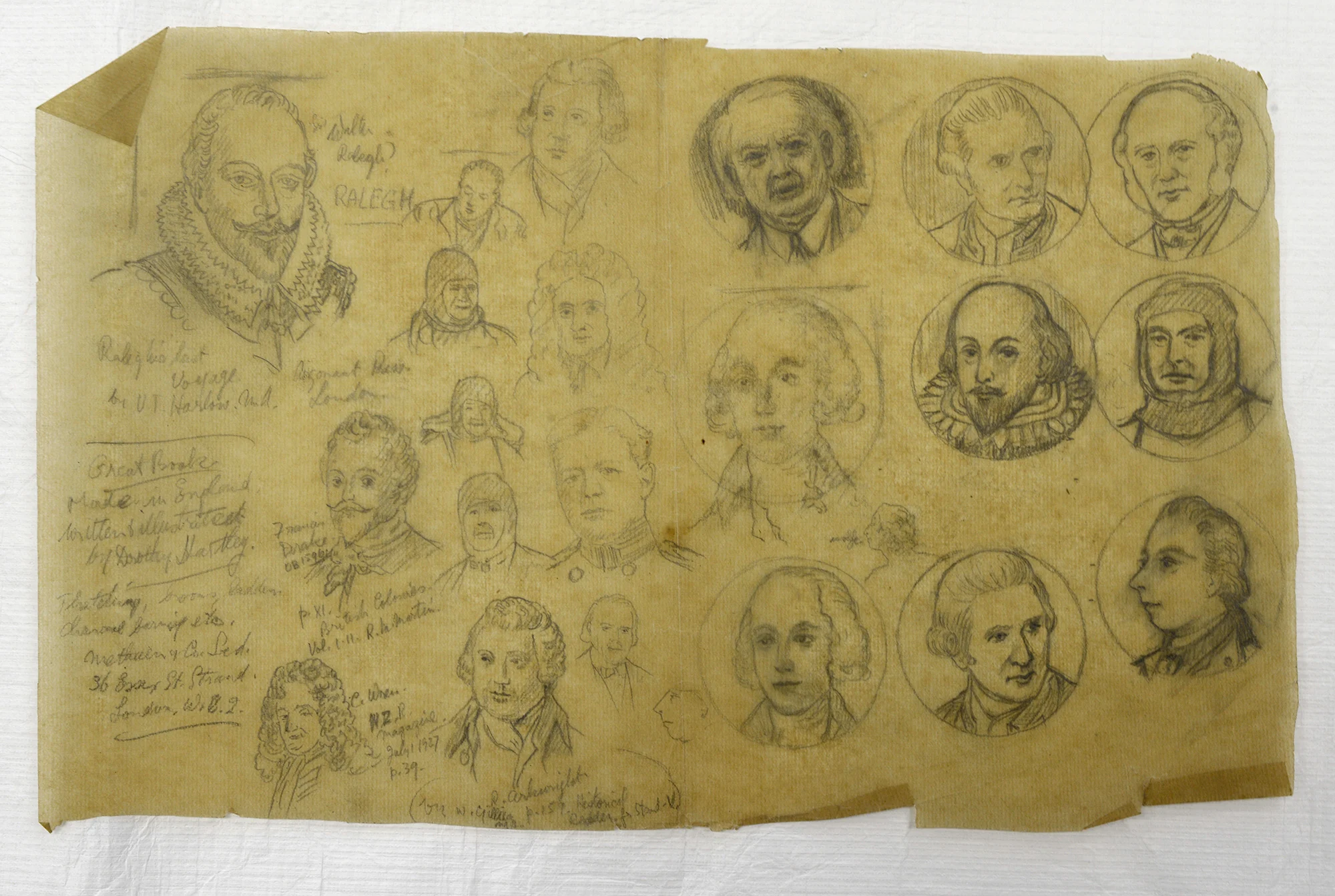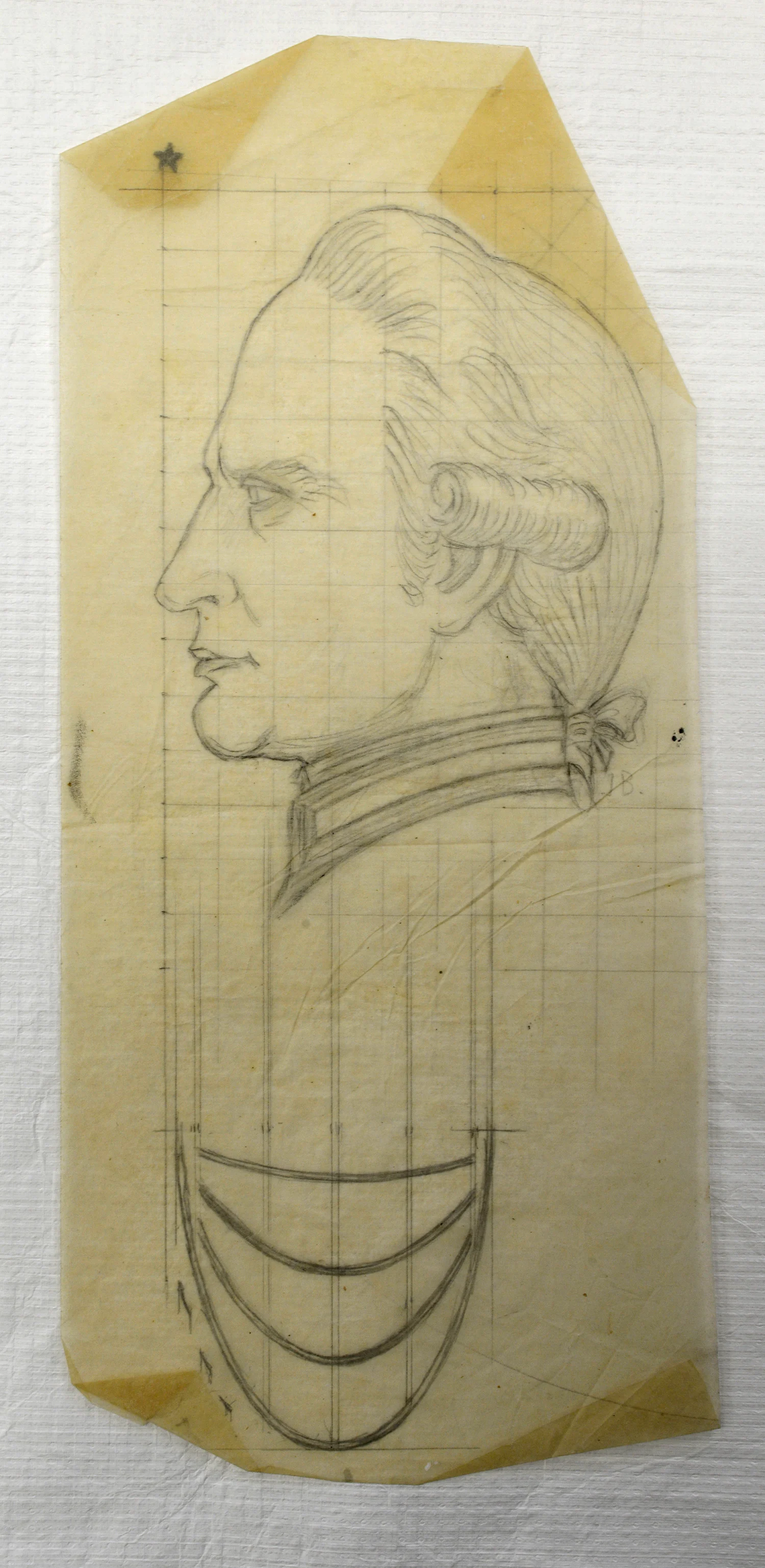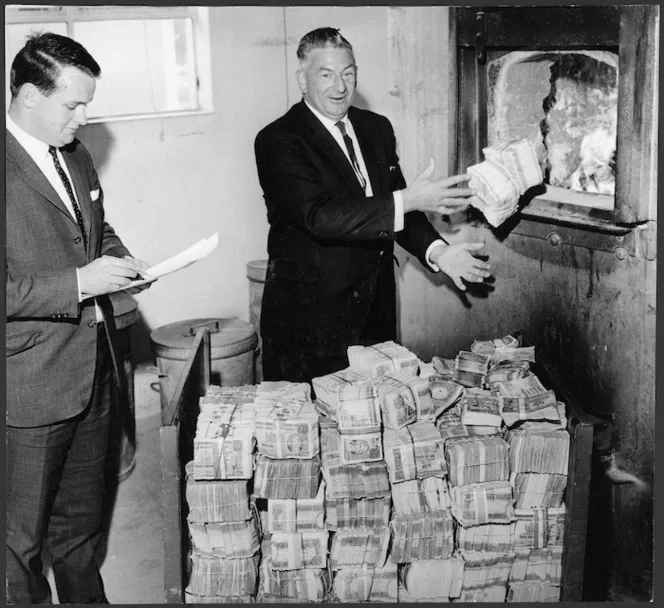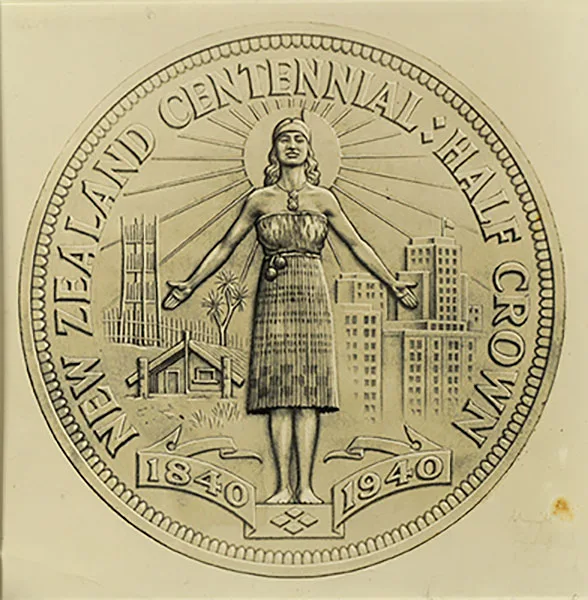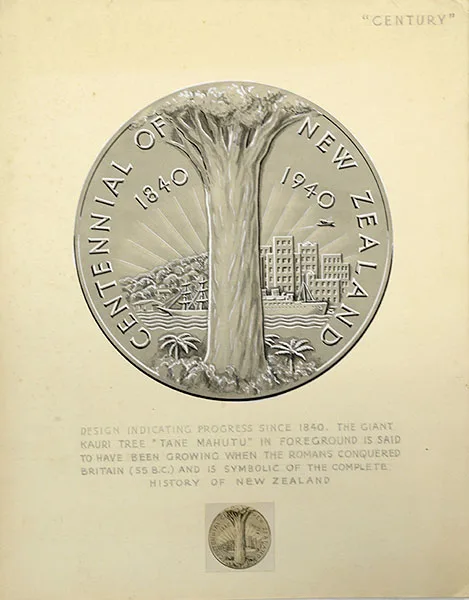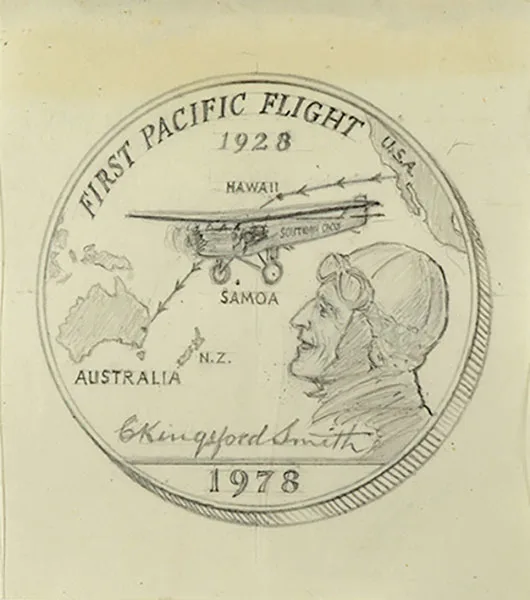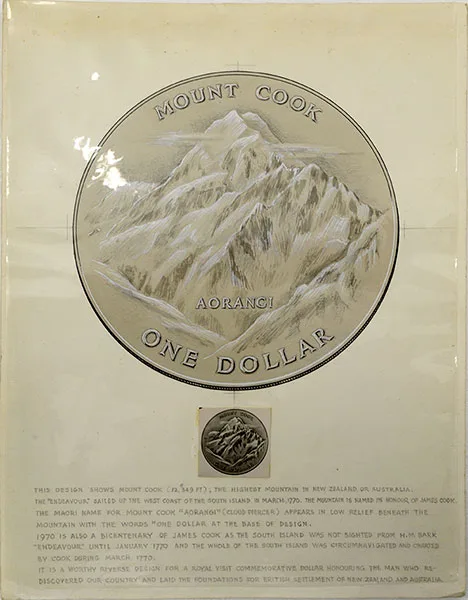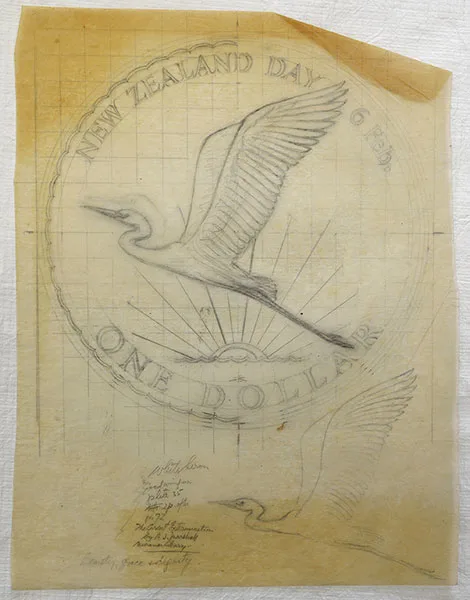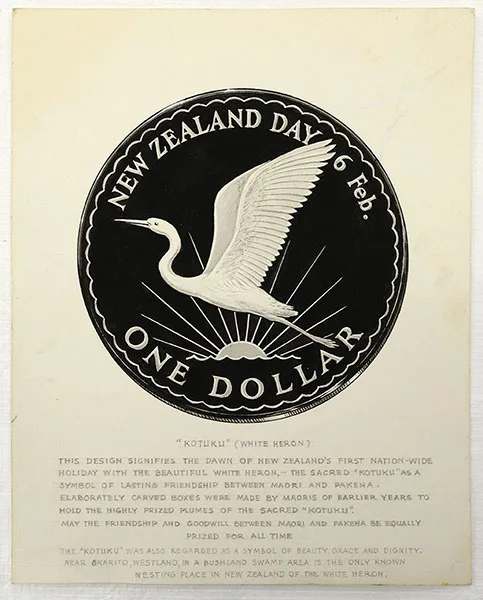Te toi taketake i muri i ngā uka o Aotearoa
The original art behind Aotearoa’s coins
In 1967, New Zealand replaced pounds, shillings and pence with dollars and cents. Discover the story behind the new coin designs as we share some of the original artwork for the first time.
Original artwork for decimal coin designs at Archives New Zealand
In 1988 and 1995, we received transfers of personal and working papers from John Newton Leon Searle. Searle was Secretary and Chief Executive Officer of the Decimal Currency Board. He was also Divisional Director of The Treasury.
The records showed Searle’s significant contribution to the design, introduction and promotion of New Zealand’s decimal currency. Among the 1988 transfer of Decimal Currency Board material, there was a box of papers belonging to Reginald George James Berry.
In this box we found Berry’s papers, photographs, negatives, sketches and notes. There were several coin designs, including the original artwork for New Zealand decimal currency. These incredibly detailed designs would become a ubiquitous part of New Zealand life for decades to come.
How decimalisation happened in Aotearoa New Zealand
Calls for Aotearoa to switch to decimal currency began as early as 1908. But it took almost 60 years for the idea to become reality.
In 1933, the government appointed a currency committee to consider decimalisation (the conversion of currency to a decimal number system). As New Zealand was in an economic depression, they decided against it due to the costs involved.
In 1957, the formal process began after a series of private members’ bills. By then, both the National and Labour parties supported the change.
In 1963, the government announced its decision to go ahead with decimalisation in 4 years time.
The Decimal Currency Board and Coinage Design Advisory Committee
It was official. New Zealand would adopt decimal currency on 10 July 1967. A statutory body called the Decimal Currency Board was set up to handle the process.
The board delegated coin development to the Coinage Design Advisory Committee. Its members were from varied backgrounds across finance, art, and government.
The design brief for New Zealand’s new coins
The committee had a clear brief. They needed to create a series of decimal coins in denominations of 1, 2, 5, 10, 20 and 50 cents.
Their terms of reference laid out specifications for the new designs. They needed to consider “native or national emblems, features, flora, fauna, historical or geographical subjects and the like”.
The coins also needed to:
be of an attractive and pleasing nature
appeal to the public of New Zealand
be helpful in educating the public in the use of the decimal system of currency
be of a standard recognised as satisfactory for coinage purposes.
Although it was unclear what would feature on the ‘tails’ side of the coins, the ‘heads’ side traditionally showed the reigning monarch. A specific portrait and lettering needed selecting — one suitable for the coin minting process. Cabinet approved the final design featuring a portrait by Arnold Machin in 1965.
The coin design process
There was much public discussion about what the new money would look like.
The process started with a public competition. 156 people submitted 624 designs including a variety of ideas. These included Māori iconography, New Zealand birds, flowers, landscapes and architecture. Themes of hunting, fishing and agriculture were also put forward.
The committee commissioned 11 designers to move to the next stage of the process. They briefed them with creating designs representative of New Zealand life, with themes of tourism, nationalism, exploration, pastoralism, flora, fauna and Māori culture.
After elimination rounds and further refining, Cabinet approved several designs for submission to Britain’s Royal Mint in November 1965. Unfortunately, they were not well received. The Royal Mint were highly critical of the designs and mostly dismissed them.
The rejected designs leaked to the media, and the public’s reaction was also negative.
Considering the controversy, the committee asked for new concepts from 5 designers. The new proposals were submitted to the Royal Mint in March 1966. They also published all the designs and asked the public to vote using forms in newspapers.
The Royal Mint provided feedback favouring designs by New Zealander James Berry. Berry's designs also received overwhelming public support.
He was chosen as the main designer in 1966, only a year before the new coins were to be released into circulation.
After almost 3 years of work, the committee was close to finalising the designs.
The final decimal coin designs by James Berry
The committee decided to use Berry’s original designs for the 1, 2, 20 and 50 cent coins. But they thought the 5 and 10 cent coins needed refining.
They suggested Berry use his tuatara design on the 5 cent piece instead of the 10 cent. For this, they recommended he adapt Māori motifs created by another designer, Francis (Frank) Shurrock.
In the end, Berry’s designs featured on all 6 coins. His initials (JB) appeared on the reverse of early bronze and cupronickel coins. The word ‘shilling’ was included on the 10 cent coin for 3 years to help the public with the change to decimal currency.
New Zealand adopts decimal currency
27 million new bank notes and 165 million new coins were released into circulation on 10 July 1967. The new money weighed over 700 tonnes.
It was delivered to banks around the country on secret trains with police, army and Reserve Bank personnel on board. The banks closed on July 5 to give staff time to switch over their records.
Obsolete bank notes were thrown into a furnace, with images shared as part of a publicity campaign. Advertisements were also played in the lead up to the change to raise awareness.
Other coin designs at Archives NZ
Searle’s records also included artwork by other designers. There was no clear order, so it’s difficult to determine with certainty who the original artists were for some pieces. It’s also unclear if all the designs were actually used.
One of them — a commemorative coin for the 1940 New Zealand Centennial Half Crown — is by Leonard C. Mitchell. A celebrated artist known internationally, it appears in the book Mitchell & Mitchell.
Another design by an unknown artist features the kauri tree Tāne Mahuta, symbolising ‘the complete history of New Zealand’.
Other designs commemorate important dates, like the first Pacific flight, royal visits and New Zealand Day.
The New Zealand Day coin may look familiar. The heron motif was eventually used on the $1 and $2 coins still in use today.
New Zealand coins today
The Reserve Bank took ownership of New Zealand’s coins in 1989. By then, inflation had reduced the value of the dollar enough to make the 1 and 2 cent coins no longer useful. They decided to demonetise them.
A year later, they introduced a new 20 cent coin design. Its original kiwi motif moved to a new $1 coin. This was adopted in 1991, along with a new $2 coin. All 3 were designed by Maurice Conly.
In 2006, the Reserve Bank introduced smaller and lighter coins made from plated steel. At the same time, they demonetised the 5 cent coin as it was also deemed no longer useful.
The 10 and 50 cent coins retained Berry’s original 1967 designs for decimalisation. This showed the timeless nature of his designs, created 40 years prior.
4 out of the 5 coins used today feature themes that originated in the process of decimalisation. Although the coin design process was at times controversial, it is clear the work done by Searle and the other members of the Decimal Currency Board and Coinage Design Committee remains relevant today.
[All photos in the blog by Simon Jay, Preservation Technician, February 2023]
